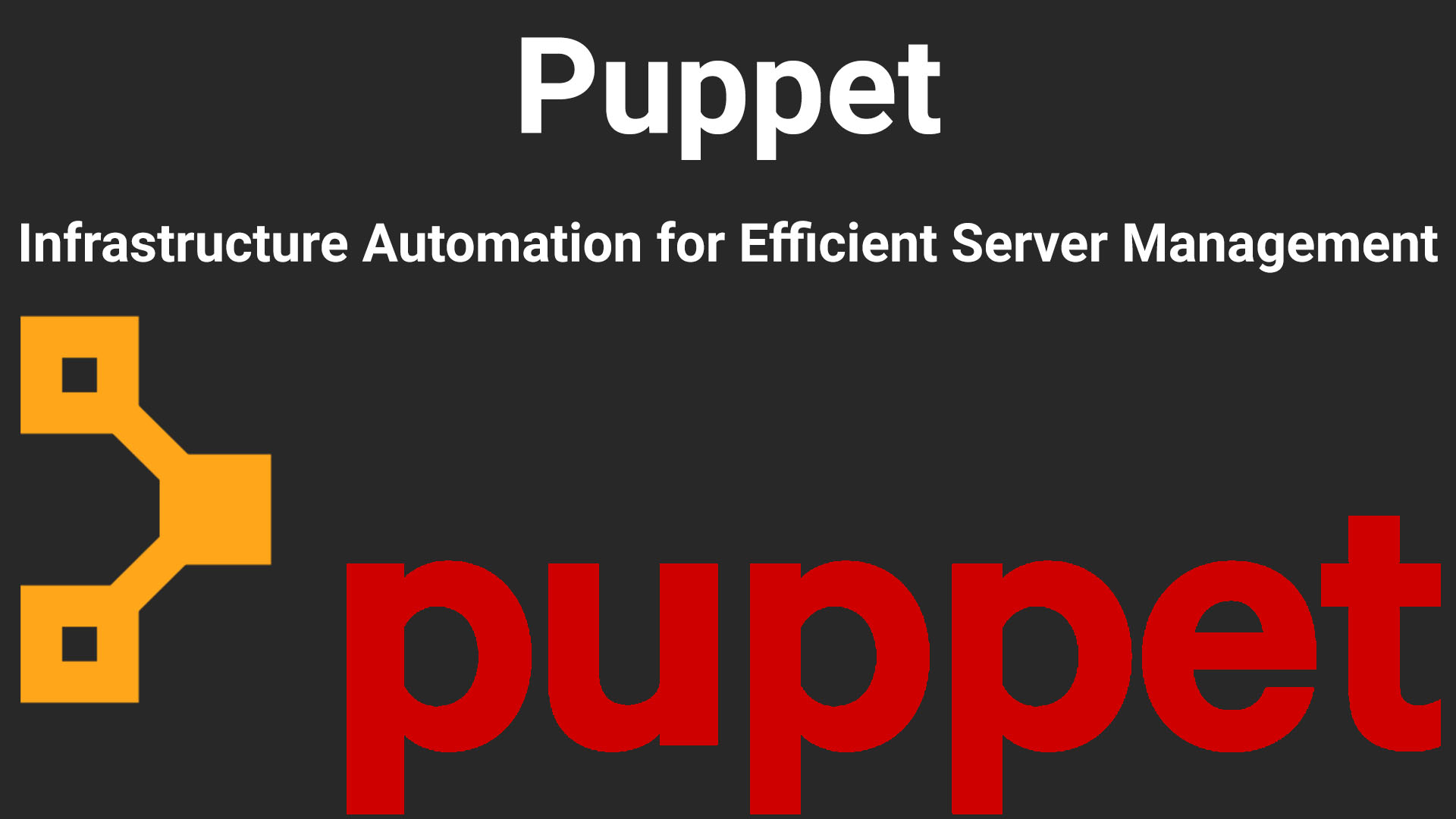Puppet: Infrastructure Automation for Efficient Server Management
- November 29, 2024, 01:49:36

In the modern world of technology, automation of server and infrastructure management processes is becoming a necessity. One of the most popular tools for this purpose is Puppet. It is a powerful configuration management system that automates server administration tasks and speeds up application deployment. In this article, we will explain what Puppet is, how it works, and why it is an integral part of successful IT strategies.
What is a Puppet?
Puppet is a server configuration management and orchestration automation tool designed to simplify and speed up application deployment processes, as well as manage their settings on different servers. Puppet allows you to centrally control the entire infrastructure using code, which significantly speeds up the development and deployment processes.
It is actively used in DevOps practices and is one of the main tools for implementing the concept of "Infrastructure as Code" (IaC), where the infrastructure is managed using program code. Puppet helps to ensure consistency and repeatability at all levels of the infrastructure, which is critical for the stability of the business.
How does Puppet work?
Puppet works on the basis of a server and client model. The system consists of two main components: Puppet Master and Puppet Agent.
Puppet Master is a central server where all configurations and scripts are stored. This server monitors all agent installations and sends configurations to the servers that need to be managed.
A Puppet Agent is a client side installed on each server or node that needs to be managed. The agent regularly contacts Puppet Master to obtain up-to-date configurations and apply them on the local system.
The work process looks like this:
- Puppet Master creates manifests (configuration specifications) that describe how the server should be configured.
- The Puppet Agent on the servers checks the configurations on the Master server and applies them.
- In case of configuration changes, Puppet automatically adjusts the state of the servers so that they meet the current requirements.
- Puppet also supports the use of various modules that allow it to expand its capabilities and integrate with other services and systems.
Why do people use Puppet?
Automation and error reduction: Puppet allows you to automate server management processes, which minimizes the likelihood of human error when configuring and maintaining the infrastructure.
Consistency: Using Puppet helps ensure that all servers and environments are configured the same, which is especially important for stability and security.
Scalability: With Puppet, you can easily manage dozens and hundreds of servers, ensuring their configuration and updating at the same time.
Repeatability: Using Puppet allows you to create configurations that can be reused to configure servers and applications, which speeds up deployment and reduces task time.
Integration with DevOps processes: Puppet is an integral part of the automation process in DevOps, allowing it to be integrated with other tools and systems for continuous integration and delivery.
Multi-platform support: Puppet supports a variety of operating systems, including Linux, Windows, and macOS, making it a versatile tool for any infrastructure.
Advantages of using Puppet for your Business
- Increased efficiency: Automating server configuration processes using Puppet reduces the time required to complete routine tasks, freeing up resources for more important tasks.
- Cost reduction: Puppet allows you to reduce operating costs by automating the management of the server infrastructure, which also reduces the number of errors and increases the stability of services.
- Flexibility and scalability: With Puppet, you can effortlessly scale your infrastructure, which is important when expanding your business or growing the number of users.
- Stability and security: Puppet helps to keep the server configuration up to date, which minimizes the risks associated with vulnerabilities and configuration flaws.
- Accelerate the adoption of new technologies: With Puppet, it is easy to manage infrastructure changes and quickly deploy new versions of applications and services.
Conclusion
Puppet is a powerful and flexible server configuration automation tool that provides organizations with tools to effectively manage infrastructure, improve security, and accelerate development processes. Thanks to Puppet, you can achieve high consistency, security and scalability in working with your server infrastructure, which is a key factor for a successful technology business.
MivoCloud services for your business
If you want to use Puppet or other automation tools in your business, MivoCloud can offer the following services:
Cloud servers and infrastructure: High-speed and scalable solutions for all your business needs.
Support for DevOps practices: We provide full support for DevOps processes, including integration with Puppet and other tools.
Consulting and setup: We will help you set up Puppet and other tools for infrastructure management in your company.
Monitoring and Security: We will ensure that your server infrastructure is monitored and protected from threats so that your data and applications remain secure.
Flexibility and scalability: MivoCloud offers solutions that can easily scale depending on the needs of your business.
With MivoCloud, your business will receive all the necessary resources and support to successfully implement automation and infrastructure management, including using Puppet to optimize workflows and accelerate the deployment of new solutions.


